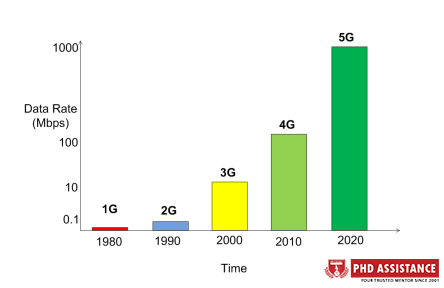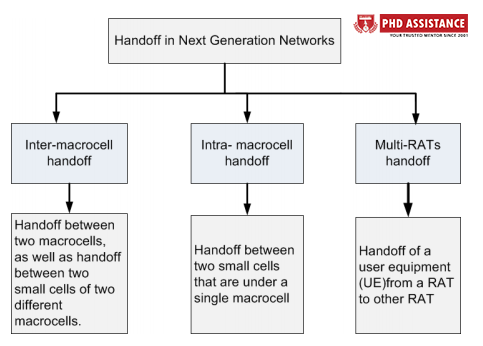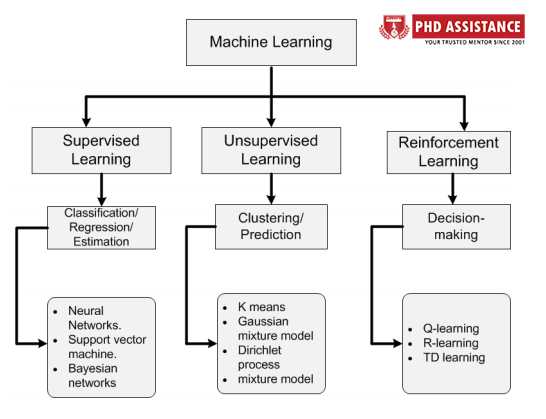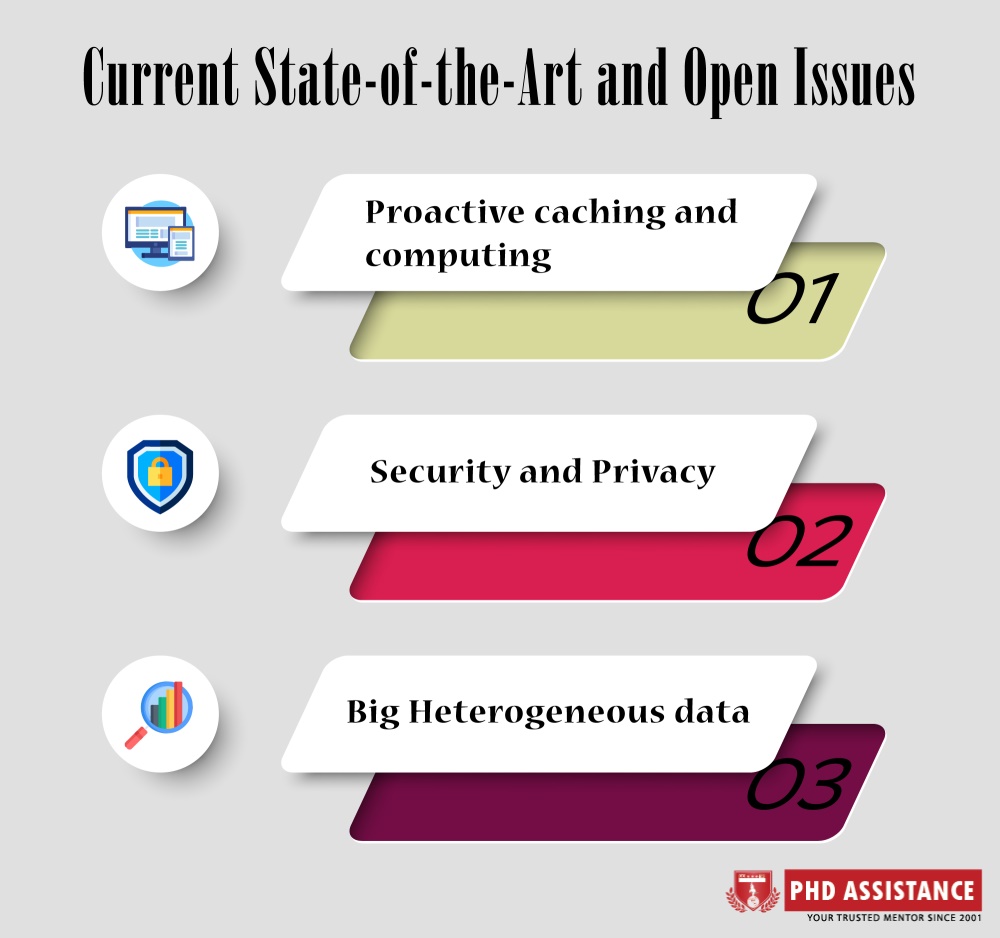BIG DATA AND NEXT GENERATION NETWORK CHALLENGES
With the advancement of next-generation cellular networks, such as 5G, the attention has switched to addressing increased data rate needs, micro cell potential, and millimetre wave spectrum. High data speeds, minimal latency, and the handling of large amounts of data are the goals of next-generation networks. These objectives will almost certainly necessitate newer architecture designs, upgraded technology with probable backward compatibility, improved security algorithms, and the ability to make intelligent decisions. In this study, we identify the potential that 5G networks can give, as well as the underlying problems that must be overcome in order for 5G to be implemented and realised.
Introduction
Big Data is defined as data whose dynamics, such as volume, velocity, truthfulness, and diversity, are substantially expanded and impossible to be handled by typical data management systems. Modern data analytics techniques are utilised to manage such large amounts of data. With the introduction of next-generation networks, the number of wireless devices is fast expanding. According to a CISCO index released in 2014, the number of wireless devices now outnumbers the world’s population [1]. The proliferation of data generated by such a varied spectrum of linked devices is unsurprising. Modern data analytics techniques(big data analytics) will be used to efficiently handle and extract meaningful insights from such a large supply of data. Discussions on next-generation networks (5G) have gotten a lot of interest in the research community in the previous few years. Given that 4G is already a globally accepted technology, possibilities and difficulties for 5G and its underlying technologies are being investigated. Over the previous few years, several advances have been explored in the literature. Ultra-dense networks, huge MIMO (Multiple-Input Multiple-Output), and millimeter-waves (mmWaves) are the most important of these [2]. The number of wireless devices expected to reach in the hundreds of billions with the introduction of 5G [2]. As a result of the bandwidth-hungry applications running on these devices, the required data rates are also increasing. Figure 1 shows a comparison of the exponential development in data rate.

Figure: Evolution of mobile generation networks.
Major Milestones of Next Generation Networks
While there are various standards for 5G, not all of them must be met at the same time and may vary depending on the underlying conditions. In video transmission, for example, a large data rate is essential, but latency and dependability can be disregarded. Latency and dependability are required in autonomous vehicles; however data rate can be reduced marginally. Figure 2 depicts a graphic representation of the required 5G functionalities.
The next generation networks will have near-zero latency and maximum throughput. These characteristics necessitate quick and dependable inter-cell or intra-cell hand-off. Hand-off is the technique of exchanging mobile network dynamics such as frequency, time slots, spreading code, or a combination of them without compromising service quality. As a result, for next-generation networks, hand-off management is crucial. Accessing numerous radio access technologies makes handoff management more challenging because of the basic requirements of next-generation networks such as extreme densification and high mobility. Figure 3 depicts a handoff.PhD Assistance experts has experience in handling dissertation and assignment in computer science research with assured 2:1 distinction. Talk to Experts Now

Figure: Hand-off in next-generation networks (inspired from [8]).
Next-Generation Networks: Current Standards and Technology Enablers
The developments in future generation networks (5G) are driven by evolutionary technologies such as mm-Wave spectrum, ultra-dense networking, massive MIMO, and unique application requirements [3]. Table 2 summarises the industry standardizations and aspirations that are now in the works.
Table 2.Standards and technology enablers for SG
| Standard/Technology Enabler | References | Vision |
| SGNOW | [4] | The latency is quite low. The idea of an unifying frame structure is a good one. Waveform structure for 5G that is feasible and attainable |
| SGPP METIS | [5] | Ubiquitous infrastructure with high coverage tendency Scalable radio access node (RAN)architecture |
| Samsung Electronics Nokia | [6] | There are billions of connected gadgets with a wide range of capabilities (IOT) |
| Huawei Ericsson | [7] | Support up to 1000 tin1es more capacity,Self-aware network Ultra-high capacityIconnectivity,Efficient network deployment |
| SGNOW | [9] | Legacy with the existing networks, Ubiquitous services and applications |
| SGPP METIS | [10] | Ultra-low latency, Concept of unified frame structure, Feasible/attainable waveform structure for 5G |
| Samsung Electronics Nokia | [11] | Ubiquitous infrastructure with high coverage tendency Scalable radio access node (RAN)architecture |
Data Analytics Perspective on Next Generation Networks
Big Data and Machine Learning can rightfully be referred to as the two pillars of 5G, given the vast volume of data generated and the sophisticated decision-making involved.
Big Data in Next Generation Networks
Congestion of mobile networks is unavoidable, given the rapid improvement of cellular technology and the rise in the number of mobile devices. As a result, big data faces processing issues because it differs greatly from ordinary data. As previously stated, the number of devices in next-generation networks will expand by a factor of 1,000 [4]. It is clear that the amount of data transferred in 5G networks will be huge and diverse. As a result, strategies for handling such large amounts of data would need to be investigated in order to optimise 5G networks. The massive influx of data will make it difficult to meet the key needs and features of 5G networks. As a result, deploying 5G networks without dealing with huge data concerns is extremely difficult. For dealing with this type of data, big data analytics approaches can be applied.
Optimization of Next, Generation Cellular Networks
Artificial intelligence includes the field of machine learning. Machine learning is a technique that allows computers to make judgments based on data input. Data is the source of input for machine learning algorithms; this data can be diverse and come from a variety of places. As a result,
machine learning can assist in predicting future events based on historical data. [5] Figure depicts the many forms of machine learning and accompanying algorithms.

Figure: Comparison of different types of machine learning.
Mobile networks are already complicated, and 5G networks are likely to be even more so than their predecessors. 5G networks will be smarter and more intelligent in terms of network management, resource allocation, load balancing, cost efficiency, power efficiency, and so on, in addition to being more sophisticated. Machine learning techniques can be used to implement these characteristics for 5G. As a result, we may conclude that machine learning will play a significant role in the deployment of 5G networks.
Role of Neural Networks – Next Generation Networks
A neural network is a type of Artificial Intelligence that functions similarly to the human brain. Millions of neurons in the human brain make decisions after examining a specific activity. Similarly, there are many nodes in neural networks. The input layer, output layer, and hidden layer are all connected to these nodes. The organisation and weights of these connected nodes define the output of a neural network. Neural networks can be thought of as non-digital computers. The field of neural networks research has been under consideration for decades. Hire PhD Assistance experts Hire PhD Assistance experts to develop your algorithm and coding implementation for your Computer Science dissertation Services.

Current State-of-the-Art and Open Issues
We will briefly cover some open topics in this section. This also provides guidance for future research at the intersection of big data and 5G, as tackling these difficulties can lead to substantial advances.
Proactive caching and computing: Modern big data analytics approaches can help reduce the cost of computing and caching for next-generation networks. Resources will be efficiently dispersed and exploited in this manner, resulting in a balance of caching and computing overhead. For example, interim and final results should only be saved if they are useful, as storing all of the data is expensive.
Security and Privacy: Big Data Analytics reveals hidden knowledge in massive amounts of data. As a result, large-scale data analysis can raise security and privacy concerns. Data should be well encrypted during the storage, administration, and processing stages to ensure that it cannot be tampered or altered. Furthermore, authorised entities should only be able to access the data through secure channels. As a result, security and privacy problems are important considerations for such a large-scale data analysis and should be addressed thoughtfully.
Big Heterogeneous data: Different types of big data sources exist, each with its own data rate, mobility, and packet loss. In wireless networks, analysing diverse data is difficult. Spatial and temporal dynamics are brought by heterogeneous data. As a result, for large spatiotemporal data analysis in mobile networks, unusual methodologies are necessary.
Conclusion
In this Blog, we will provide an overview of the upcoming 5G communication networks. We also go over the many requirements, problems, and design issues that must be addressed in order for 5G networks to be realised. Ultra-dense networking, millimetre wave spectrum, and massive MIMO are among the important technologies highlighted. We outline the obstacles that must be solved, as well as viable architecture designs for 5G deployment. We also discuss the energy issue in 5G networks, and discover that it is constantly at the top of the list of 5G network issues. Service models for 5G are being considered during device development, and their backward compatibility will be critical for both users and service providers. We also provide a big data perspective on 5G, as well as the opportunity that machine learning techniques provide for learning, inference, and decision making on 5G data. There are many more domains in 5G networks that have not been explored in depth in this text but are crucial. The security and privacy of prospective designs, hardware, and data transfer protocols in 5G networks are key concerns that necessitate additional investigation.
References
- Attaran, Mohsen. “The impact of 5G on the evolution of intelligent automation and industry digitization.” Journal of Ambient Intelligence and Humanized Computing (2021): 1-17.
- Kangra, Kirti, and Jaswinder Singh. “Internet of Things and Its Relevance.” Integration and Implementation of the Internet of Things Through Cloud Computing. IGI Global, 2021. 19-36.
- Chen, M.; Qian, Y.; Hao, Y.; Li, Y.; Song, J. Data-driven computing and caching in 5G networks: Architecture and delay analysis. IEEE Wirel. Commun. 2018, 25, 70–75
- Zoha, A.; Saeed, A.; Farooq, H.; Rizwan, A.; Imran, A.; Imran, M.A. Leveraging Intelligence from Network CDR Data for Interference aware Energy Consumption Minimization. IEEE Trans. Mobile Comput. 2017
- Taleb, T.; Samdanis, K.; Mada, B.; Flinck, H.; Dutta, S.; Sabella, D. On multi-access edge computing: A survey of the emerging 5G network edge cloud architecture and orchestration. IEEE Commun. Surv. Tutor. 2017, 19, 1657–1681
- Wunder, G.; Jung, P.; Kasparick, M.; Wild, T.; Schaich, F.; Chen, Y.; Brink, S.; Gaspar, I.; Michailow, N.; Festag, A.; et al. 5GNOW: Non-orthogonal, asynchronous waveforms for future mobile applications. IEEE Commun. Mag. 2014, 52, 97–105.
- 5G Infrastructure Association. The 5G Infrastructure Public Private Partnership: The Next Generation of Communication Networks and Services. Available online: https://5g-ppp.eu/ (accessed on 15 July 2016)
- Osseiran, A.; Boccardi, F.; Braun, V.; Kusume, K.; Marsch, P.; Maternia, M.; Queseth, O.; Schellmann, M.; Schotten, H.; Taoka, H.; et al. Scenarios for 5G mobile and wireless communications: The vision of the METIS project. IEEE Commun. Mag. 2014, 52, 26–35.
- Sultan, K.; Ali, H. Where Big Data Meets 5G? In Proceedings of the Second International Conference on Internet of Things, Data and Cloud Computing, Cambridge, UK, 22–23 March 2017; pp. 103:1–103:4
- Richard, Lucie, et al. “Validation study of health administrative data algorithms to identify individuals experiencing homelessness and estimate population prevalence of homelessness in Ontario, Canada.” BMJ open 9.10 (2019): e030221.
- Nokia Networks. Technology Vision 2020 Teaching Networks to Be Self-Aware. Technical Report. Available online: https://networks.nokia.com/innovation/technology-vision/teach-networks-to-be-selfaware (accessed 22 March 2017).
- Liu, Dongfang, Weidong Huang, and Guangjun Xing. “Research on 5G Technology Competition Situation Based on Patent Analysis.” 2021 2nd International Conference on Artificial Intelligence and Information Systems. 2021.
 Previous Post
Previous Post
